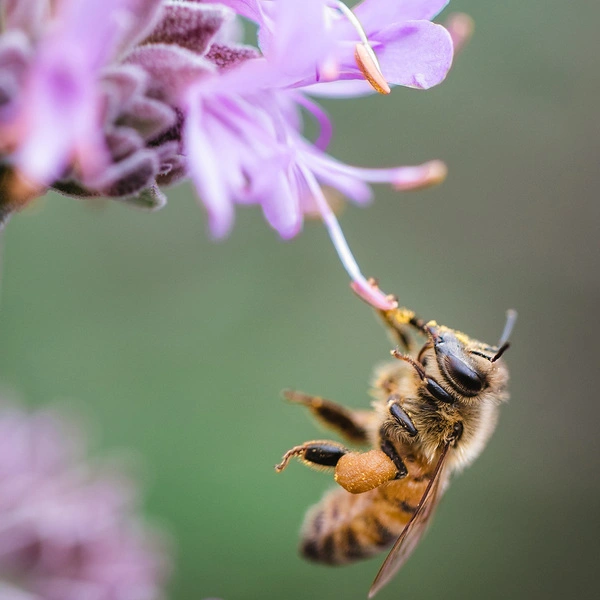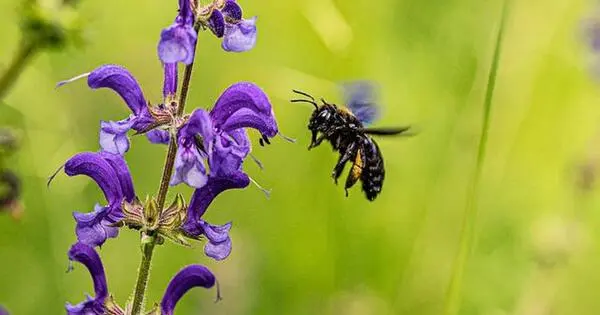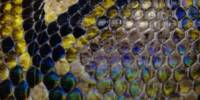According to scientists in a new study, the local environment plays an important role in the health and diversity of the gut microbiome of wild bees, which could help detect invisible stressors and early indicators of potential threats. The researchers pioneered a new frontier of metagenomics by sequencing the entire genomes of three species of carpenter bees, a type of wild bee, in North America, Asia, and Australia. This analysis provided them with information about the bee’s gut microbiome (bacteria and fungi), diet, viral load, and environmental DNA.
According to York University researchers, the local environment plays an important role in the health and diversity of the gut microbiome of wild bees, which could help detect invisible stressors and early indicators of potential threats.
The researchers pioneered a new frontier of metagenomics by sequencing the entire genomes of three species of carpenter bees, a type of wild bee, in North America, Asia, and Australia. This analysis provided them with information about the bee’s gut microbiome (bacteria and fungi), diet, viral load, and environmental DNA.
Unlike social bees (such as honeybees and bumblebees), solitary bees get their microbiome, which is important for health, from their environment where they forage for food, rather than from their nest mates. Carpenter bees lay eggs in woody plant stalks rather than in hives.
We’ve been testing this approach in a few species, but we hope to study dozens of wild bee species in the future, with broader comparisons. These two studies are really laying the groundwork. The long-term goal is to be able to use these tools to detect early signs of stress in wild bees and thus identify habitats that require restoration or preservation.
Professor Sandra Rehan
“Because they are much more sensitive to their environment, they may make better bio-indicators,” says Faculty of Science Associate Professor Sandra Rehan, corresponding author of the study, Comparative metagenomics reveals expanded insights into intra- and interspecific variation among wild bee microbiomes, published today in the journal Communications Biology.
Local populations in Australia had highly distinct metagenomes and microbiomes, so much so that machine learning tools could reliably predict which population each bee was drawn from. Crop pathogens previously only found in honeybees were also discovered in the microbiomes of carpenter bees.
“These pathogens are not necessarily harmful to bees,” says Rehan, “but these wild bees could potentially be vectoring diseases that could have a negative impact on agriculture.” Understanding how these pathogens spread in wild bees is critical because bees contribute to global ecological and agricultural health, as well as more than $200 billion in annual agricultural services.
Establishing a baseline of what a healthy microbiome looks like in wild bees allows scientists to compare species across continents and populations, and to figure out how diseases and harmful microbiota are being introduced and transmitted.

“We can really dissect bee health in a very systematic way looking at population genetics and parasite pathogen loads, healthy microbiomes and deviations,” says Rehan, whose Postdoctoral Research Associate, Wyatt Shell, led the study. “The long-term goal is really to be able to use these tools to be able to also detect early signatures of stress and habitats in need of restoration or conservation. To develop it almost like a diagnostic tool for bee health.”
For the first time, scientists believe they have captured the core microbiome of carpenter bees. They discovered beneficial bacteria in all three carpenter bee species, which aided metabolic and genetic functions. They also found Lactobacillus species, which are essential beneficial bacteria found in most bee lineages and are essential for good gut health. Lactobacillus has been shown to protect against common fungal pathogens, boost the immune system, and improve nutrient absorption.
However, in a recent paper published in the journal Environmental DNA by Rehan and her graduate student Phuong Nguyen, Developmental microbiome of the small carpenter bee, Ceratina calcarata, which studied the microbiome in brood and adult carpenter bees in cities, Lactobacillus was found to be absent.
“This raises red flags,” Rehan says. “We are continuing those studies to look at more nuanced urban and rural comparisons, as well as long-term data, in order to truly understand these environmental stressors. When we characterize a microbiome and see deviations from what we know to be normal, it can indicate a population or species that is under threat.”
Overall, the findings indicate that metagenomic methods could provide important insights into wild bee ecology and health in the future.
“We’ve been testing this approach in a few species, but we hope to study dozens of wild bee species in the future, with broader comparisons. These two studies are really laying the groundwork” she claims “The long-term goal is to be able to use these tools to detect early signs of stress in wild bees and thus identify habitats that require restoration or preservation. We are thrilled to be developing the tools that will usher in a new era of wild bee research and conservation.”
















